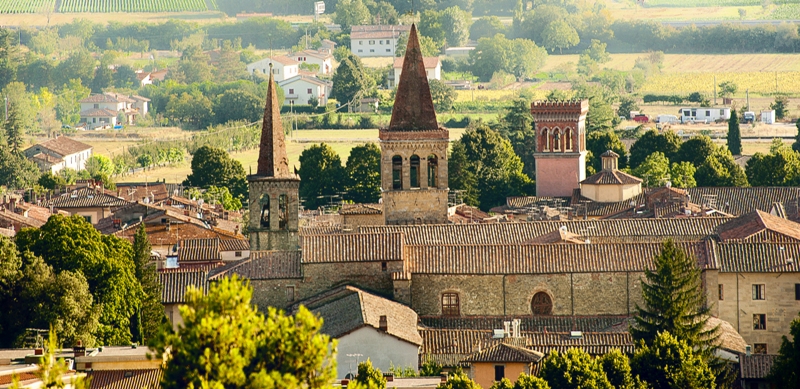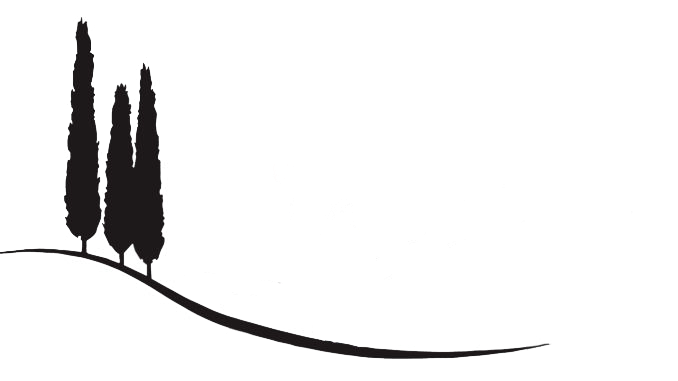Sansepolcro

Sansepolcro has good, inexpensive restaurants, a twice weekly market when the main street is lined with stalls selling everything under the sun, lots of local shops for those who wish to risk their Italian, three excellent supermarkets if you don’t speak the language, two cinemas, regular concerts, and a first rate swimming pool and sports complex.
Gubbio, Assisi – this is the countryside St Francis travelled round – Arezzo, Perugia, Florence and Urbino are among the towns easily reached by car, and the spectacular Tiber Valley, in which San Sepolcro is situated, is a paradise of lost villages, wayside inns, monasteries and magnificent castles. Sansepolcro is easily reached from Bologna, Pisa or Ancona by car and, being in the valley, there are no hills to climb.
Sansepolcro is situated in the very center of Italy – an area of Italy populated first by the Etruscans, then by the Romans. The Etruscans had their principle cities in Perugia, Cortona and Arezzo (all towns within a 40 mile radius of Sansepolcro) and the used the Valtiberina (Valley of the River Tiber) as a source of timer – at that period (c. 1000 BC) the valley was covered in walnut trees. However, toward 700 BC the might of the Roman army had destroyed all the Etruscan empire and a group of Roman centurions chose the site where Sansepolcro is today to build a camp – Birtugia. A number of other Romans, including Pliny the Younger, build their summer villas in the Valtiberina.
Legend has it that the town of Sansepolcro was founded by two pilgrims returning from the Holy Land with a fragment of Christ’s tomb and they chose the area as a site for a religious community and a shrine for this holy relict. The name Sansepolcro is derived from Santo Sepolcro meaning “holy sepulchre”.
Sansepolcro is essentially a Renaissance town and it was during this period (14th and15th centuries) that the town flourished. Sansepolcro had 26 noble families who all had stone towers attached to their elegant palazzos. However, when the powerful Medici family took over the control of Sansepolcro, they made the nobles shorten their towers to the height of the adjoining palazzos as a sign of subservience. These towers can still be seen as you walk around the town. The only tower left standing at its original height was in the center of Piazza Torre di Berta. In fact, the square was named after its tower, the Berta tower. However, the tower, having survived the Medici, was blown up by the retreating German army in 1944.
The Medici were not the only family to govern Sansepolcro. Due to the position of the town on the very edge of Tuscany, bordering with Umbria and Le Marche, control of Sansepolcro alternated between the Medici, the powerful Dukes of Montefeltro from Urbino, and, very briefly, the Church. However, Sansepolcro has never had its own ruling family and the democratic feeling that held it together during the Renaissance can still be felt today.
The town has an abundance of churches and monasteries (about 18), most dating back from the 13th and 14th centuries. For this reason, the town museum and, indeed, many of the churches are extremely rich in art. The most famous son of Sansepolcro is Piero della Francesca and four of his works can be found in the town museum.
Of these the most famous is the Resurrection. This was painted for the council chamber of the town hall (in the 1400s the museum building was in fact the town hall) and has never been moved. Aldous Huxley described the Resurrection as the “greatest painting in the world,” and even if you do not agree it is hard not to be impressed by this fresco. There are two points of particular interest in the picture. The first is that the figure of Christ stand with his left foot on the grave edge and, at the side of the fresco, all the plants and trees in the background are alive and flourishing (representing the rebirth of life), while the other side, where Christ’s foot is still in the grave, has a desolate, dead background. The other point of interest is that one of sleeping soldiers is a self-portrait of the artist.
Most towns in Italy have some kind of festival during the year and Sansepolcro is no exception. On the second Sunday of September, Sansepolcro holds the Palio della Balestra – and ancient contest against the nearby town of Gubbio, where crossbowmen (balestrieri) from the two towns aim at a target set up in the Piazza Torre di Berta. The bold nearest the center wins. The contest dates from the Renaissance and those that take part are dressed in authentic costume, made by the same designer from Rome that makes the costumes for Zeffirelli’s films.
